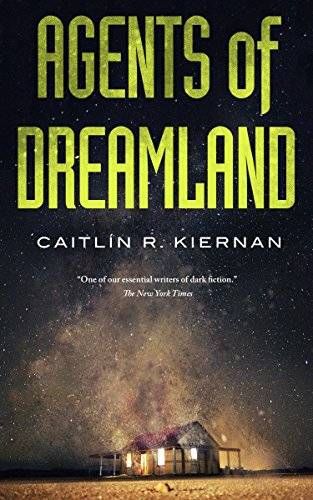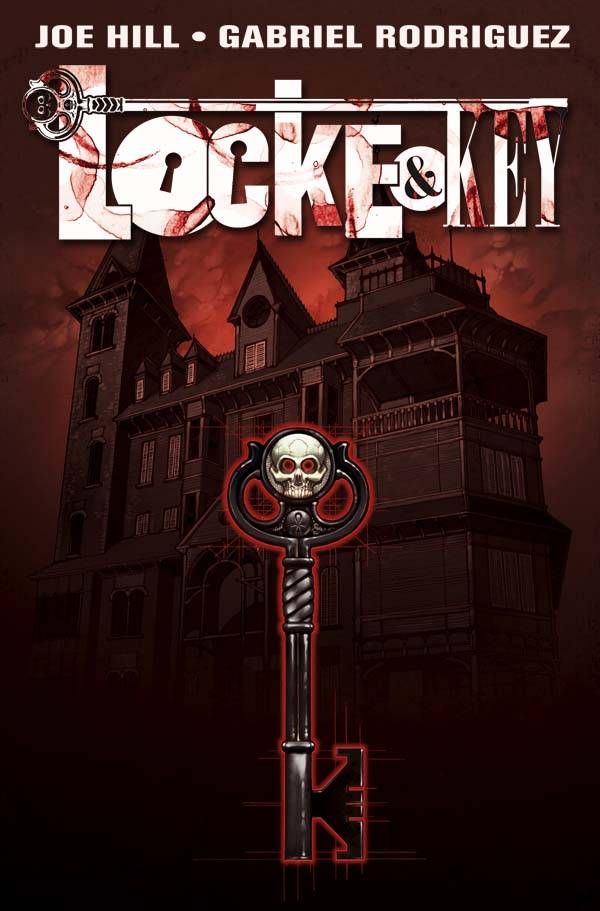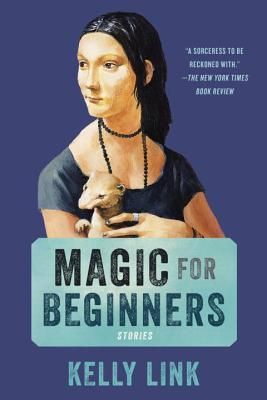
Your Introduction to the Cosmic Horror Genre
Need more horror to read? Allow me to introduce the cosmic horror sub-genre.

What is Cosmic Horror?
A zombie doesn’t scare me nearly as big sky country, where there’s nowhere to hide. Yikes! That’s why I connect with cosmic horror. Cosmic horror stories are a whole different kind of nightmare: the terrifyingly unknowable.
Cosmic horror activates our fear of the unknowable.
These cosmic horror tales draw upon the power of the sublime to make us feel small, inconsequential, and totally helpless against something vast and natural. For instance, that featureless white landscape of a total whiteout snow storm. Or the panic you might feel if the electricity has gone out and you encounter a pitch black house.
Cosmic horror is about finding those moments where the unknown crashes up against the known. Maybe you’ve always avoided open water because it makes you feel powerless. A good cosmic horror story would play on that fear, driving you to a startling encounter with the ocean where you are forced to confront how little you can do to change vast cosmic forces that shape humanity. If you thought we have control over our natural world, cosmic horror will make you think twice.
Cosmic horror can also be intensely psychological. This genre of horror will often ask us to doubt our default psychological experience. What is “reality” if not a construct we take for granted? Psychology still has blind spots in understanding the brain. Cosmic horror delights in exploiting that endless unknown of the mind. Some of the best cosmic horror crosses over into psychological thriller.
Lovecraft’s Huge Influence… and Problematic Legacy

The cosmic horror genre generally credits American writer Howard Phillips Lovecraft as its founder, and, indeed, “Lovecraftian horror” and “cosmic horror” are often used interchangeably. A prolific author, Lovecraft penned many stories and novels that are often grouped together in the Cthulhu Mythos. Some of his most widely known work include the novellas At the Mountains of Madness (1936), The Shadow over Innsmouth (1936),and The Shadow Out of Time (1936). A few acclaimed short stories are “The Rats in the Walls” (1924) and “The Call of Cthulhu” (1928). If you’re wondering where to start with Lovecraft, a Rioter shows you where to begin.
Lovecraft’s fiction established the Cosmicism literary philosophical movement, of which cosmic horror is one example. At the Mountains of Madness, for instance, is written as a narrative by the leader of a failed Antarctic expedition. The crew encounter a lost prehistoric alien civilization. When this seemingly dormant community shows itself to be active, the men come face to face with an—unnamed and once unknowable—evil. In “The Rats in the Walls,” a man moves back to his ancestral home, a mansion where he hears rats crawl in the walls, a paranoia he cannot prove to be true. As buried family secrets are unearthed, the man’s quest for understanding leads him into the heart of sinister forces. But it’s the sound of the rats—invisible and unknowable—that begin to erode his mind.
When Lovecraft died in 1937, his work had yet to see its full popularity. Yet as his reputation became more widely known and his writing found an audience, Lovecraft became scrutinized more critically. Both Lovecraft’s fiction and his personal life endorsed racist views. His own views reflect a position of white supremacy. Meanwhile, his stories often antagonize non-Anglo Saxon races and people who are not of English descent.
Reckoning with Lovecraft’s problematic legacy is a point of dialogue for modern writers of horror and speculative fiction. One notable milestone was when Black author Nnedi Okorafor blogged about her discomfort at receiving the 2011 World Fantasy Award, which was given as a bust of Lovecraft. The incident brought awareness to the issues in continuing to glorify the author while glossing over the pain and prejudice he promoted. Daniel José Older argues for dethroning Lovecraft and instead highlighting authors of color, including Octavia Butler, for their equally influential impact on shaping fantasy and science fiction. Contemporary writers working in the cosmic horror genre are grappling with Lovecraft’s racism head on. A new class of diverse writers engage with the issues in their work. Bryan Thao Worra explores this tension in his essay, “How Can Writers of Color Reconcile H.P. Lovecraft’s Influence with His Racist Legacy.” While Lovecraft might have started the cosmic horror genre, today it ultimately belongs to the people who are writing it and reading it, reflecting a growing diversity within the genre. If it is time to permanently disentangle Lovecraft from cosmic horror, there’s no better class of authors to give the reins to.
New Cosmic Horror Fiction

The Imago Sequence and Other Stories by Laird Barron
Laird Barron is a leading author of cosmic horror known for high-concept terrors. In this collection, read some of his acclaimed short fiction like the titular novella, “The Imago Sequence,” which was nominated for a World Fantasy Award.

Meddling Kids by Edgar Cantero
Love Netflix’s Stranger Things? You’ll devour Edgar Cantero’s Meddling Kids, an ode to the unique way that horror scares us when we are young. In this cosmic horror novel, a band of teen detectives have grown up after one divisive summer trying to unmask the Sleepy Lake monster in 1977. Fast forward to 1990 when they team up again to find the truth about their past.

The Shape of Water by Guillermo del Toro
In this novelization of Guillermo del Toro’s Academy Award-winning film The Shape of Water, a mute woman takes pity on a sea creature being studied in secret by the U.S. government. She rescues the creature, only to fall in love with it. This exquisite study of a romantic connection between humans and the unknowable others is classic cosmic horror.

Cthulhu’s Daughters: Stories, edited by Silvia Moreno-Garcia and Paula R. Stiles
Inspired by Lovecraft, this collection of cosmic horror by female authors brings another perspective to the traditionally male-dominated genre. In 25 chilling tales, authors like Selena Chambers and Arinn Dembo give voices to the women characters in Lovecraft’s work. (Note: Cthulhu’s Daughters is the American edition of the anthology She Walks in Shadows).

Agents of Dreamland by Caitlín R. Kiernan
Again and again, Caitlín R. Kiernan is praised for nailing the mood and atmosphere of cosmic horror fiction. Kiernan expertly captures a Lovecraftian mood in this nonlinear novella about the experiences of several people on the fringe of the unknowable.

Dreams from the Witch House: Female Voices of Lovecraftian Horror, edited by Lynne Jamneck
This collection of cosmic horror and weird fiction includes an all-star lineup of female authors including Gemma Files and Nancy Kilpatrick. Illustrations by Daniele Serra make the sinister stories about ancient menaces and their ominous warnings for mere mortals like us.

The Night Ocean by Paul La Farge
If you like your cosmic horror to be intensely psychological, The Night Ocean will be like catnip. In this terrifying and weird novel, psychiatrist Marina is disturbed when her writer husband develops an obsession with H.P. Lovecraft that leads to his alleged suicide. Marina doesn’t believe it and embarks on a journey to find out the truth, even as it leads her into the dark chapters of Lovecraft’s own life.

The Ballad of Black Tom by Victor LaValle
Think the unknowable can only exist in remote landscapes? Victor LaValle’s expert dark urban fantasy and science fiction proves you wrong. Start with his Shirley Jackson Award–winning The Ballad of Black Tom, in which a man hustling gigs to pay for his family’s needs gets caught in a path of terror. Set in 1920s Harlem, LaValle’s novel summons Lovecraftian paranoia and existential dread even in a crowded city and is a conscious answer to Lovecraft’s 1925 story “The Horror at Red Hook.” LaValle dedicated this novel to the problematic grandfather of cosmic horror: “To H.P. Lovecraft, with all my conflicted feelings.”

White is for Witching by Helen Oyeyemi
Helen Oyeyemi’s White is for Witching is a terrifically cosmic twist on the much-used haunted house horror trope. The Silver family mansion in Dover, England, has housed four generations of Silver women. In its labyrinthine passageways and dark corners, the house supports a paranormal connection among its female inhabitants, past and present. As the weight of the Silver’s painful history begins to push teen Miranda Silver into madness, the family might have to finally know the unknowable terrors lingering inside their family tree.
Graphic Novels and Comics
Lovecraftian terrors are a natural fit for comics and graphic novels. In these cosmic horror comics, talented artists find a way to depict that blood-curdling unknowable visually. For more, read our roundup of horror manga.

Black Hole by Charles Burns
This provocative graphic novel tracks the outbreak of a bizarre virus that plagues suburban Seattle in the 1970s. The illness seems to hit teenagers and young adults particularly hard. Burns’s visuals scream paranoia, and his visceral art will make you squirm.

Through the Woods by Emily Carroll
Creepy, gory, and gorgeous, Emily Carroll’s Through the Woods collects five short horror stories. These tales invert the charming Disneyfied fairy tales we’ve come to love by drawing upon the far darker origins of folktales.

Locke & Key by Joe Hill and Gabriel Rodriguez
Horror writer Joe Hill teams up with illustrator Gabriel Rodriguez in Locke & Key, a comics series that wears its cosmic horror inspirations on its sleeve. In the first volume, Welcome to Lovecraft (subtle, no?), readers are introduced to a family who relocate to a remote mansion after a traumatic death. Soon the Lockes will learn the house holds many secrets, like the phantom who torments them.
New Weird Fiction
The new “weird” sub-genre often crosses over into cosmic horror. These stories blend fantasy, horror, and literary fiction in Kafka-esque surreal tales. Often, they contain elements that could also be considered as cosmic horror. For more on New Weird, check out Book Riot’s “Beginner’s Guide to the New Weird Genre.”

Annihilation by Jeff VanderMeer
Jeff VanderMeer’s Annihilation helped make new weird mainstream. The opening in the Southern Reach trilogy, this gripping thriller traces the escalating terror among an all-women scientific expedition to the mysterious classified Area X. The narrator, a biologist, is after more than plant observations: she’s trying to solve the mystery of her husband’s disappearance in Area X. Annihilation was made into a feature film starring Natalie Portman.

Magic for Beginners by Kelly Link
Kelly Link’s debut short story collection, Magic for Beginners, almost defies words, winning comparisons to Alice Munro, George Saunders, J.K. Rowling, and others. What’s clear, though, is Link’s voice is distinct and wholly original. Blending magical realism, surrealism, and the absurd in stories featuring fairies, zombies, and rabbits, Link’s work celebrates the weird.

The City & the City by China Miéville
China Miéville’s The City & the City won acclaim as a genre-bending speculative neo-noir.

Made for Love by Alissa Nutting
Hazel has recently escaped a psychologically abusive marriage to a tech CEO. Seeking refuge with her father and his lifelike sex doll, Hazel settles into the trailer park for senior citizens. Meanwhile, a conman has a born-again moment after which he can only get aroused by dolphins. As their paths intersect, things get weird.
For more from Book Riot on cosmic horror, find awesome works of fiction inspired by Lovecraft, three important Lovecraft retellings, and diverse writers of horror fiction.











